14 of Cap. Alelyukhin
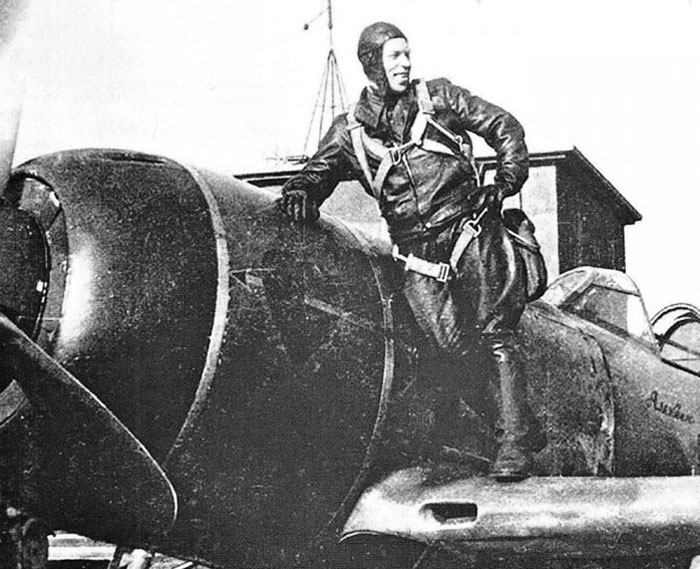
Cap. Aleksei Alelyukhin was the deputy commander of 9 giap, that received the first La-7 in July 1944 and was fully converted to this type in the late summer.
http://soviet-aces-1936-53.ru/abc/a/alelyhin.htm
As one can see here, his plane was characterized by a red heart with an arrow passing through, on both the sides of the nose. This one was received as a gift in an airfield in East Prussia in December 1944; this could explain the strange absence of the lightning on the sides, that were typical of 9 giap.
Spinner and front ring, including the shutter, were red too, as common on many La-7s.
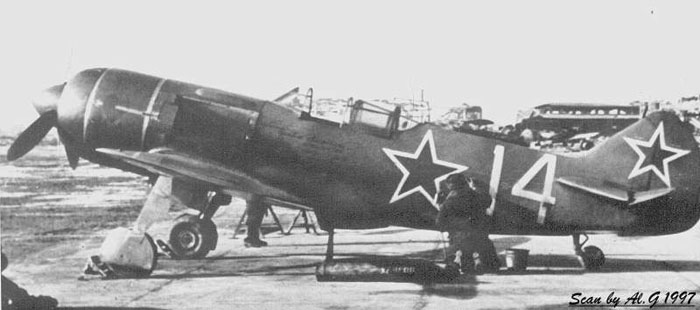
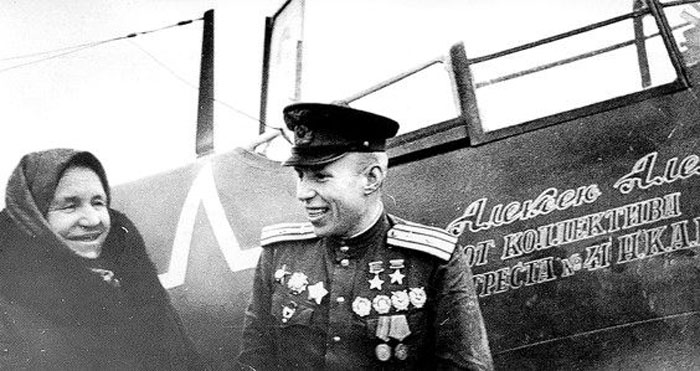
Alelyukhin during the ceremony of delivery of this gift plane, in East Prussia in December 1944.
The inscription says: 'Alekseyu Alelyukhinu ot kollektiva tresta No.41 N.K.A.P.'
that means 'To Aleksey Alelyukhin from the collective of factory no.41 N.K.A.P.' (the People's commissariat of the Aviation Industry).
Interestingly, the (red?) inscription on the right side is fully outlined in white, probably a request of the photographer to make it more visible.
Image from Red Stars of Geust, Keskinen, Stenman ed Apali Oy
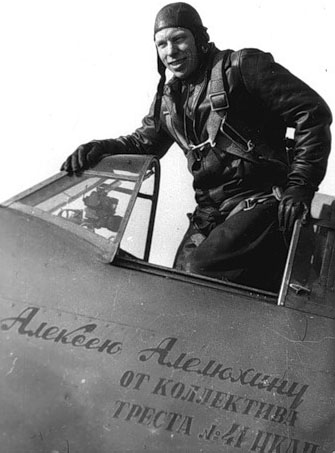
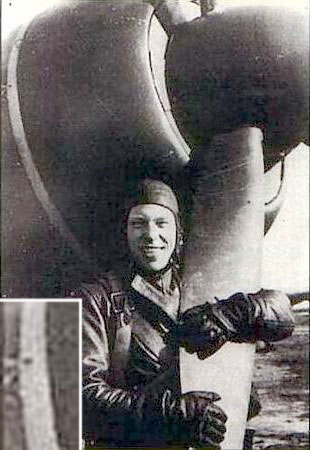
Left: the inscription on the left side, visible on another photo, is without the white outline.
Right: the photo of the pilot close to the propeller of his plane is interesting because it shows the point of the arrow, demonstrating that the emblem of the heart and arrow was mirrored on both the sides of the cowling.
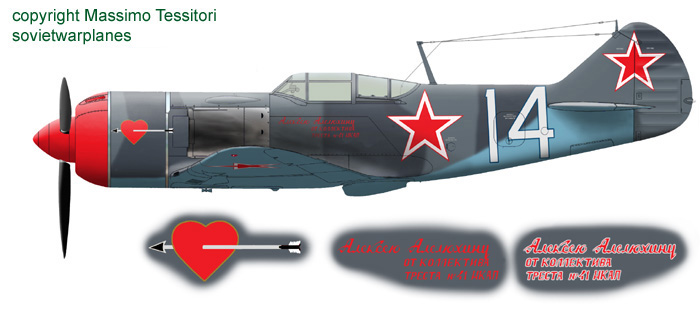
A profile of Alelyukhin's white 14.
The emblem of the heart and arrow on the other side of the cowling was mirrored
The inscription on the left side was in red without an outline, while the one on the right was outlined in white.
17 of Lavrinyenkov
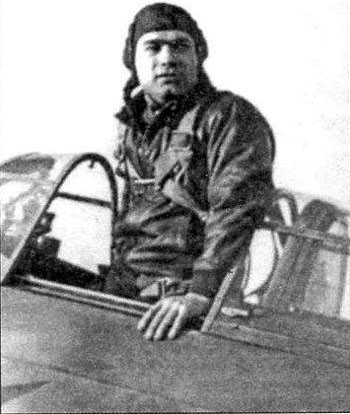
Maj. Vladimir D. Lavrinyenkov was the commander of 9 giap, twice HSU.
Lavrenkynov is in the cockpit of his plane. On the left, below, we see a detail of the arrow, suggesting that it was all red as on plane 24 of Amet-Khan Sultan.
Image from Lavochkin La-7 of Milos Vestsik, MBI
http://sovietwarplanes.com/board/index.php?topic=1136.0
http://www.warheroes.ru/hero/hero.asp?Hero_id=572

Here is the best photo available of his plane, unfortunately very partial and subject to different interpretations.
What I think to see is that the cowling was camouflaged, because we see both the blue-grey border on the front ring, on the right of the photo, both an angularly shaped division line between AMT-11 and 12 on the side of the cowling.
The detail shows what seems to be the La-7 logo on the cowling; the dark, near vertical stripe doesn't make any sense, and could be a defect of the negative.
The small cyrillic L on the prop blade is a factory mark, and can be seen on many Lavochkins.
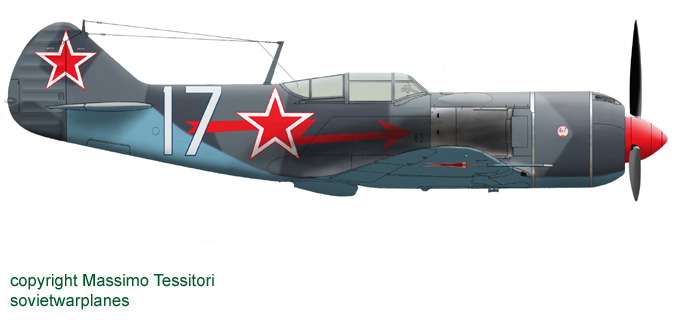
This profile shows a reconstruction of Lavrinyenkov's plane on the base of the available informations and photos.
It is very likely that the plane received a red front ring, and perhaps even some personal emblem, in a second time, as the plane of Amet-Khan and other pilots, but this is not supported by available photos or informations.
23 of Golovachev
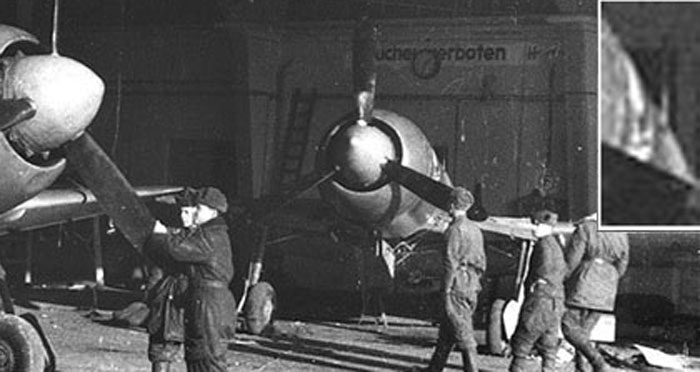
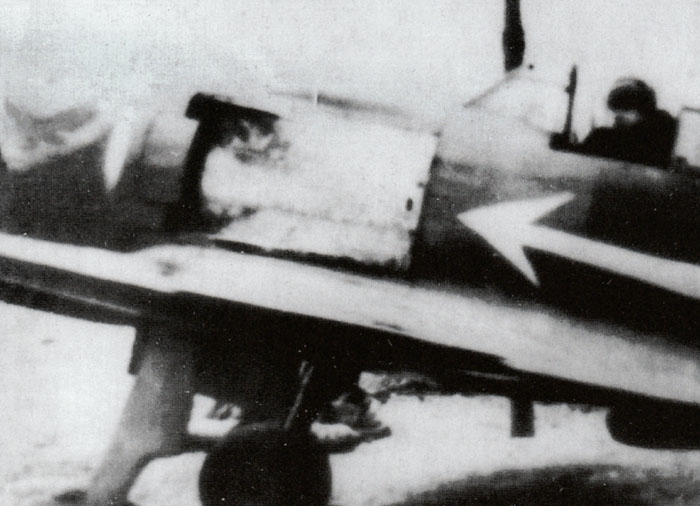
Two photos are available of plane 23 of Cap. P. Ya. Golovachev, commander of a squadron of 9 giap.
In the first one, it appears from the front on the background of the plane of Amet-Khan.
Another photo shows a detail of the markings of the nose. As one can see from both photos, the colr of the heart is rather light, comparable to the supposedly yellow spinner.
Image from Lavochkin La-7 of Milos Vestsik, MBI
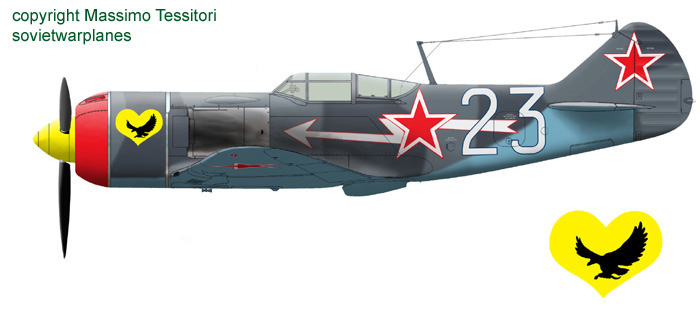
Profile of the plane 23 of Golovachev. It had the standard emblem of the unit, a white bolt with thin red outline; besides, his personal emblem was an heart with the shape of a flying eagle on it, nearly surely mirrored on both sides.
On some profiles, the heart is drawn as red, but both photos show it too light to be red, so it was drawn as yellow.
24 of Chernik
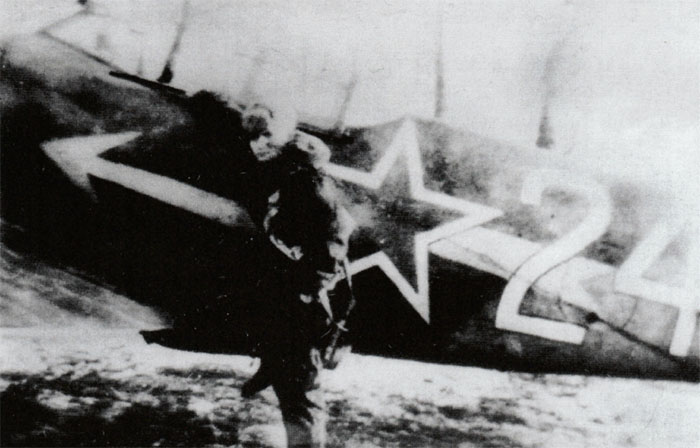
Lt. Chernik was the wingman of Golovachev.
The photo was taken in Lithuania, and shows the pilot aside his plane 24, with the standard white bolt of 9 giap. No any emblem on the nose is known on his plane.
The fact that the bort number is the same of the plane of Major Amet-Khan Sultan could have reinforced the belief that the plane of the famous ace had a white lightning painted on.
Image from Lavochkin La-7 of Milos Vestsik, MBI
24 of Amet-Khan Sultan

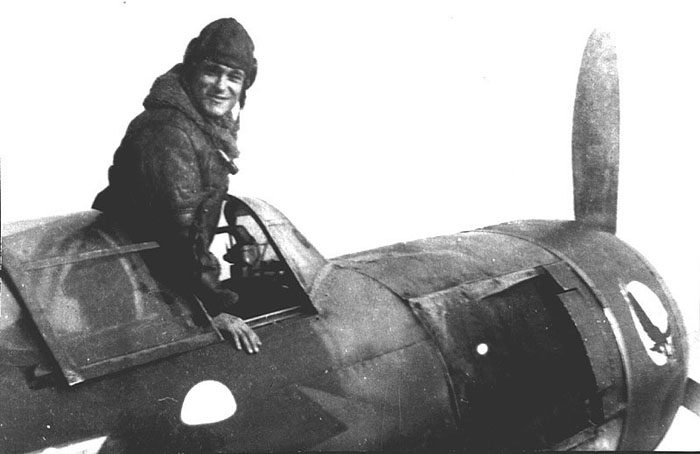
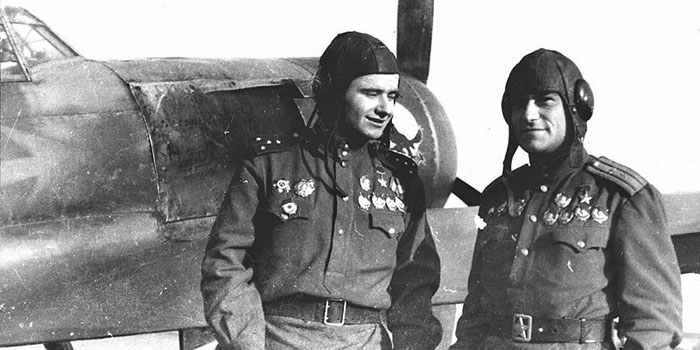
Three photos of the plane of the famous pilot Major Amet-Khan Sultan, probably taken in East Prussia where the 9 giap operated in early 1945.
http://soviet-aces-1936-53.ru/abc/a/amethan.htm
http://www.airaces.narod.ru/all1/amet_han.htm
One of the most discordant interpretation is about the presence and color of the lightning on the fuselage sides, characteristic of the planes of 303 iad that included 9 giap.
According to some interpretations, the lightning should be white, or white with a thin red outline, as usual on other planes of the same unit.
According to another author, there were not lightning because he couldn't see them on the photo.
The photos aside show that the lightning are there, but they were painted with a dark color, probably red that makes few contrast on a bw photo. This was probably made to distinguish it better from another La-7 n.24 flown by lt. Chernik, that had white lightning with red outline.
Anyhow, it is likely that the lightning had been white with red outline in some previous date, but it is not known if this was after the painting of the emblem on the cowling.
All sources agree on the red ring around the nose; more controversial is the spinner, that appears lighter than the cowling ring (even taking into account the frontal illumination), but darker than the circular background of the eagle (despite this is less on light); tin my idea the spinner probably was yellow.
Other prominent characteristic of Amet-Khan's plane is the white circle with the black shape of an eagle attacking a small plane. This emblem probably was mirrored on both the sides of the nose, as the heart with arrow of plane 14 of Alelyukhin; besides the similar plane 23 of Golovachev had his emblem at least on the left side of the cowling, and probably mirrored on both sides for the same reason.
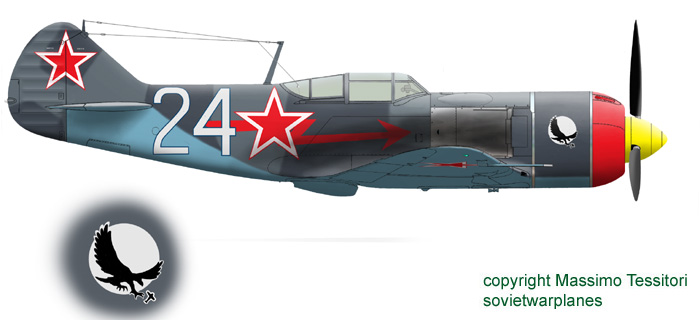
A profile of plane 24 of Amet-Khan Sultan.
The fonts and the wide size of the stars are typical of La-7s built in Zavod 381, as the other known planes of the same unit.

Above:
the label of this can of food gave inspiration to the emblem of the plane of Amet-Khan and other pilots
Right:
images of the emblem of Maj. Sirotin's P-39, that looks closely copied, with minor modifications.
http://www.airaces.narod.ru/all3/sirotin.htm
(images via Michal Sekula).
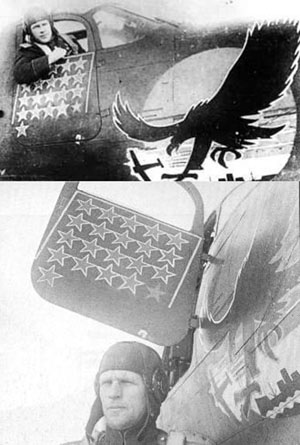
La-7 w/3 guns of N. Ostapchenko
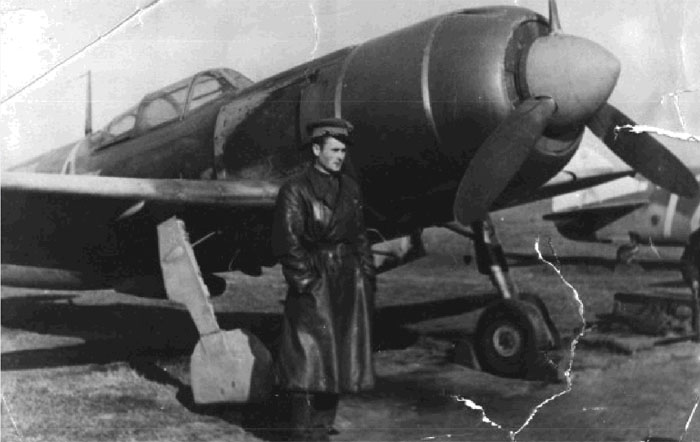
Picture of La-7 with 3 guns B-20 supposedly of pilot N. G. Ostapchenko of 9 giap.
Usually planes of 9 giap had white arrows on the fuselage... in facts, here it seems to see a deleted white arrow behind the steel protection plate.
Perhaps the photo was shot after the war, when the units receive the order to delete the markings that made their units easily recognizable.
Even more strange, plane 72 on the background shows a white tail, that is not known as a 9 giap identification mark; in wartime, white tail was identificative for 863 iap.
Anyway, being unlikely that planes of different regiments stand so close, one can think that the white tail replaced the deleted arrows as a regimental mark.
The thin line on the left leading edge seems due to the slat in open position.
Image and identification via A. Ruchkovsky

This profile is a reconstruction of plane 72, supposing that the front part was similar to that of Ostaphenko, whose code is unknown.
Here, we see its likely look during the war, with factory camouflage and standard marks of 9 giap as those of Chernik's plane.
Apart for the number, the main reason of interest is that this is a 3-guns La-7.
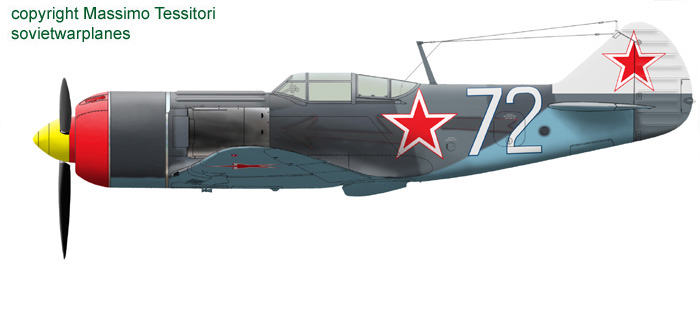
This is a reconstruction of the later look of plane 72 as it likely was at the date of the photo, supposing that the front part was similar to that of Ostaphenko's plane.
We see wide dark grey repainting that cover the front of the fuselage and the arrow, that remains barely visible.
The white painting of the tail could be a new regimental fast recognition mark, likely introduced after the war's end.